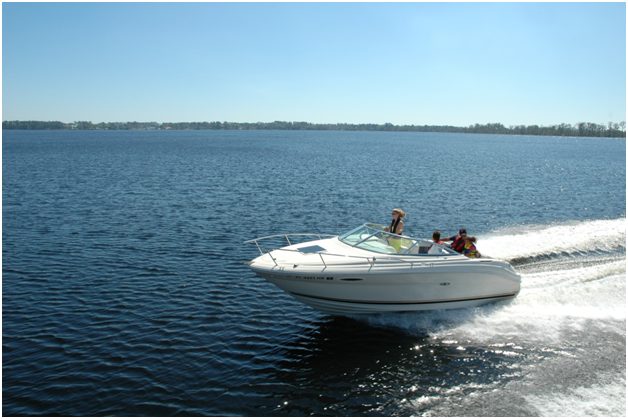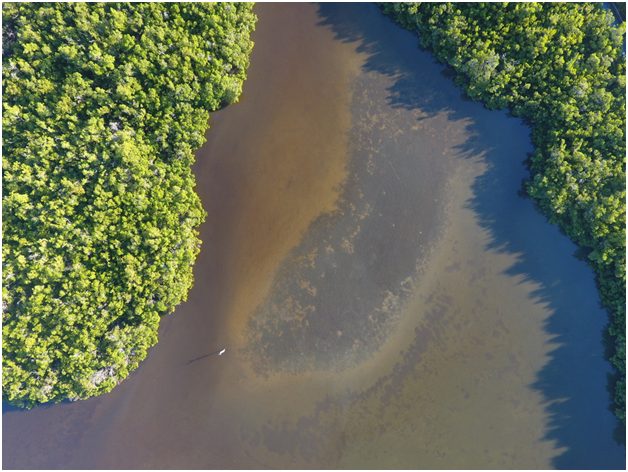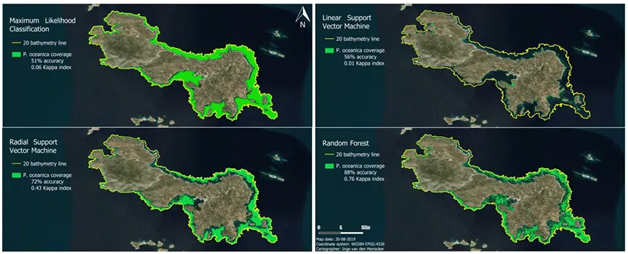The debasement of P. Oceanica seagrass knolls is a significant worry since these marine ecosystems play a crucial job in the wellbeing and profitability of numerous Mediterranean marine natural surroundings. Seagrass and mapping are major devices for estimating the status and patterns of glades and their natural conditions (Topouzelis et al., 2018). The Greek Non-Governmental Organization Archipelagos Institute of Marine Conservation, working from the islands of Samos and Lipsi, is focused on gathering spatial information around the Greek coast to create increasingly precise natural surroundings appropriation maps of P. oceanica so as to screen and secure these exceptionally important biological systems. Archipelagos lead Garmin Marine research with different research vessels, including the 22-meter long Aegean Explorer. This vessel is furnished with a variety of logical instruments, including single-and multibeam sonar, structure scanner, biomass scanner just as a submerged camera equipped for arriving at a depth of 300 meters.

Mapping Seagrass Conveyance
The conveyance of Pacific oceanica is mapped by methods for remote detecting procedures, GIS, and sonar estimations in the field. One should learn ArcGis to know about the contribution for the remote detecting strategy is Sentinel-2A satellite symbolism. The satellite picture is pre-handled to manage essential rectifications of the obstructions that decide the light in the climate and water before determining any quantitative data on the sea-going territories that attention on seagrass (Traganos and Reinartz, 2018). The principle ventures here are environmental remedy, sun glimmer evacuation, and water segment amendment.

During the field tasks ground truth information about the seagrass knolls gathered. A DownScan sonar is introduced on an examination vessel and on the back of the kayak to get data about the ocean bottom. The sonar transducer transmits ultra-sound waves to the seafloor from which base morphology is determined. At the point when Pacific oceanica is available it happens on the sonar yield as a fluffiness over the seafloor. Waypoints are set for Pacific oceanica (P) or no P. oceanica (NP), which are utilized as preparing information during the picture arrangement procedure and exactness information during the precision evaluation.
Characterizing Seagrass Nearness or Nonattendance
Subsequent to adjusting the satellite picture, the pixels are classified to demonstrate Pacific oceanica nearness or nonappearance. Fundamental in most oceanic remote detecting considers is the way toward recognizing unmistakable spread or substrate types in the investigation zone on a satellite picture into reasonable classes, which is defined as remote detecting picture classification. In this system administered picture grouping is applied, in which the order is performed with ground truth information.

Four directed picture classifiers are investigated: Maximum Likelihood Classifier (MLC), Radial Support Vector Machine (SVM), Linear SVM and Random Forest (RF). Every one of these strategies is based alone numerical capacity. The decision for a strategy can be founded on various criteria, for example, picture goals, spatial scale and the ground truth informational collection. The systems are assessed on their exactness rate and Kappa Index. These parameters are inferred by methods for the precision waypoints and a Confusion Matrix (Cohen, 1960).
Looking at Picture Classifiers
The four picture arrangement strategies are performed for six distinct islands in the Southeast Aegean Sea, at three diverse spatial scales and with various waypoint densities to ideally investigate the capacity and execution of the methods. Figure 5 shows the seagrass appropriation around the island of Lipsi displayed by the four classifiers. Because of the impediments of satellite symbolism the appropriation is displayed till a bathymetry of 20 meters. The maps show critical contrasts in seagrass dissemination demonstrated by the four procedures.

RF and Radial SVM resulted in the most accurate maps (respectively 88% and 72%) for this study, even when the waypoint density is reduced. It can be noticed between these two that the seagrass pixels classified by RF are more randomly distributed than with Radial SVM, which clearly shows the function of these two techniques. MLC seems to overestimate the P. oceanica coverage since more than 50% of the NP points are modeled as P pixels. Linear SVM makes an extreme underestimation as 98% of the P points are modeled as NP pixels.
Concluding Remarks
The modeling of P. oceanica coverage around islands in the Southeast Aegean Sea resulted in highly accurate outputs modeled by RF and Radial SVM. The review has shown that each image classification technique consists of its own function and therefore delivers distinguishing outputs. The choice for a classification technique depends on different criteria, including spatial scale, image resolution, and the ground truth data set.
Simultaneously, the choice for a classification technique also strongly depends on the purpose and use of the final maps. For example, Archipelagos is committed to conserving the seagrass by using the maps to the government, local communities, ports, and fishermen to achieve legislation, protection, and awareness. A classifier that slightly overestimates is more likely to be selected in this case, than one that strongly underestimates. These classification purposes and applications should be kept in mind when investigating the techniques and the motives to select one. Because of these motivations, further contributions and efforts are required to investigate the assessment and applications of remote sensing image classification techniques.
To get in-depth knowledge of Mapping the Subsea Timberlands of the Mediterranean you can enroll for ArcGis training live by Edunbox with 24/7 support and lifetime access.
